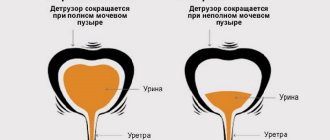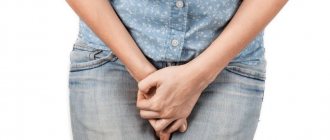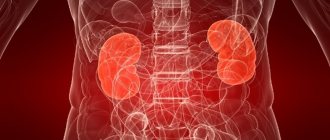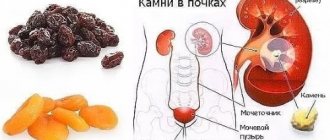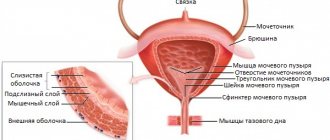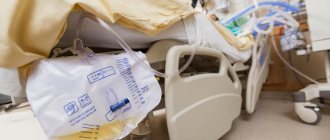Female reproductive system
The uterus is a pear-shaped organ located between the bladder and the lower intestine.
It consists of two parts, the body and the cervix. When a woman is not pregnant, the body of the uterus is approximately the size of a fist, with its walls pressed against each other. During pregnancy, the walls of the uterus move apart from each other as the fetus grows. The cervix is located at the bottom of the uterus. It has a canal bounded by the internal and external os that connects it to the vagina, which allows menstrual blood to flow from the uterus to the vagina during menstruation.
The fallopian tubes. On each side of the body of the uterus there are two tubes known as the fallopian tubes. At the end of each tube are the ovaries.
The ovaries are ovum-producing organs that contain 200,000 to 400,000 follicles. These cell follicles contain the materials needed to produce mature eggs.
The inner lining of the uterus is called the endometrium. During pregnancy, this inner lining thickens and its blood vessels become engorged with blood to accommodate and support the growing fetus. If pregnancy does not occur, the endometrium leaks out as part of the menstrual cycle. Menstrual flow also consists of blood and mucus from the cervix and vagina.
Gonadotropin-releasing hormone (GnRH), a hormone from the hypothalamus that stimulates the anterior pituitary gland to produce follicle-stimulating hormones (FSH) and luteinizing hormone (LH).
Estrogen, progesterone and the male hormone testosterone are secreted by the ovaries and complete the hormonal processes necessary for a woman's reproductive health.
Physiological reasons
The most common cause of this symptom is pregnancy. The gradual enlargement of the uterus with the growth of the fetus leads to compression of the bladder. Constant pressure on the organ causes a frequent urge to urinate; there are situations when a woman cannot restrain this feeling, and involuntary urination occurs. To avoid such situations, pregnant women should empty their bladder more often.
An equally common cause of tightness is a significant degree of obesity. Excess fat deposits put pressure on the bladder, causing the need to urinate frequently.
Bladder location
Let's find out what can put pressure on the bladder. This organ is located in the pelvis, in the lower abdomen. In men, the rectum and prostate gland come into contact with it, in women – the vagina and uterus. In people of both sexes, the bladder (its upper part) and the intestines (small, sigmoid, transverse colon) are adjacent to each other.
Most often, discomfort is caused by direct compression of the bladder by nearby organs. This occurs both as a result of normal physiological processes and in the presence of pathology in the body.
The feeling of pressure occurs for various reasons. Most often it appears when compressed by intestinal loops, the uterus, or the prostate gland. This activates pain receptors and baroreceptors in the wall of the bladder, which causes characteristic symptoms.
Intestines
Since the intestines are located nearby, in some diseases it puts pressure on the bladder. The symptom can occur in both women and men with the following pathologies:
- obstruction. Feces accumulate in the intestines. They clog the lumen of the sigmoid, small or transverse colon, stretching it. Larger loops take up more space. Characteristic signs: abdominal pain, bloating, flatulence, stool retention;
- benign tumor or cancer. Rarely encountered;
- intestinal inflammation. Usually of an infectious nature (causative agent - salmonella, E. coli). Accompanied by severe abdominal pain, vomiting and diarrhea. Less common are Crohn's disease or ulcerative colitis. Any inflammation is characterized by swelling. As a result, the intestines put pressure on the bladder;
- anatomical and physiological features of the body - low location of the intestines. In this case, complaints arise in childhood, and diagnosis is not difficult;
- acquired bowel prolapse. Occurs due to decreased muscle tone of the anterior abdominal wall or connective tissue dysfunction. The provoking factor is excessive physical activity. A characteristic symptom is nagging pain in the lower abdomen and painful periods in women.
In case of intestinal diseases, in addition to pressure in the bladder, other symptoms of disruption of the intestinal tract are intensely manifested.
The male body has characteristic anatomical features. The prostate gland is located at the bottom of the bladder in men.
An enlarged prostate due to prostatitis, adenoma or cancer puts pressure on the bladder. Patients complain of pain in the lower back, lower abdomen, perineum, fever and weakness.
A hollow muscular organ that is located between the bladder and rectum. It is fixed in the pelvis by ligaments and muscles.
Uterine prolapse
Occurs in young and older women. The causes of uterine prolapse are difficult childbirth, congenital pathology of the ligamentous apparatus or its wear and tear with age, and constant constipation.
A change in the normal location of the organ provokes compression of the bladder. Patients also complain of nagging lumbar pain and a sensation of a foreign body in the vagina. There is a disturbance in the menstrual cycle;
Pregnancy
Pregnancy is a natural, physiologically determined process, so it only takes time for discomfort to disappear.
As the fetus grows, the uterus stretches, enlarges and changes its position.
Tumor of the muscle tissue of the uterus of a benign nature.
It can develop on both the internal and external surfaces of the organ. When it reaches a large size, it puts pressure on the bladder.
Obesity

